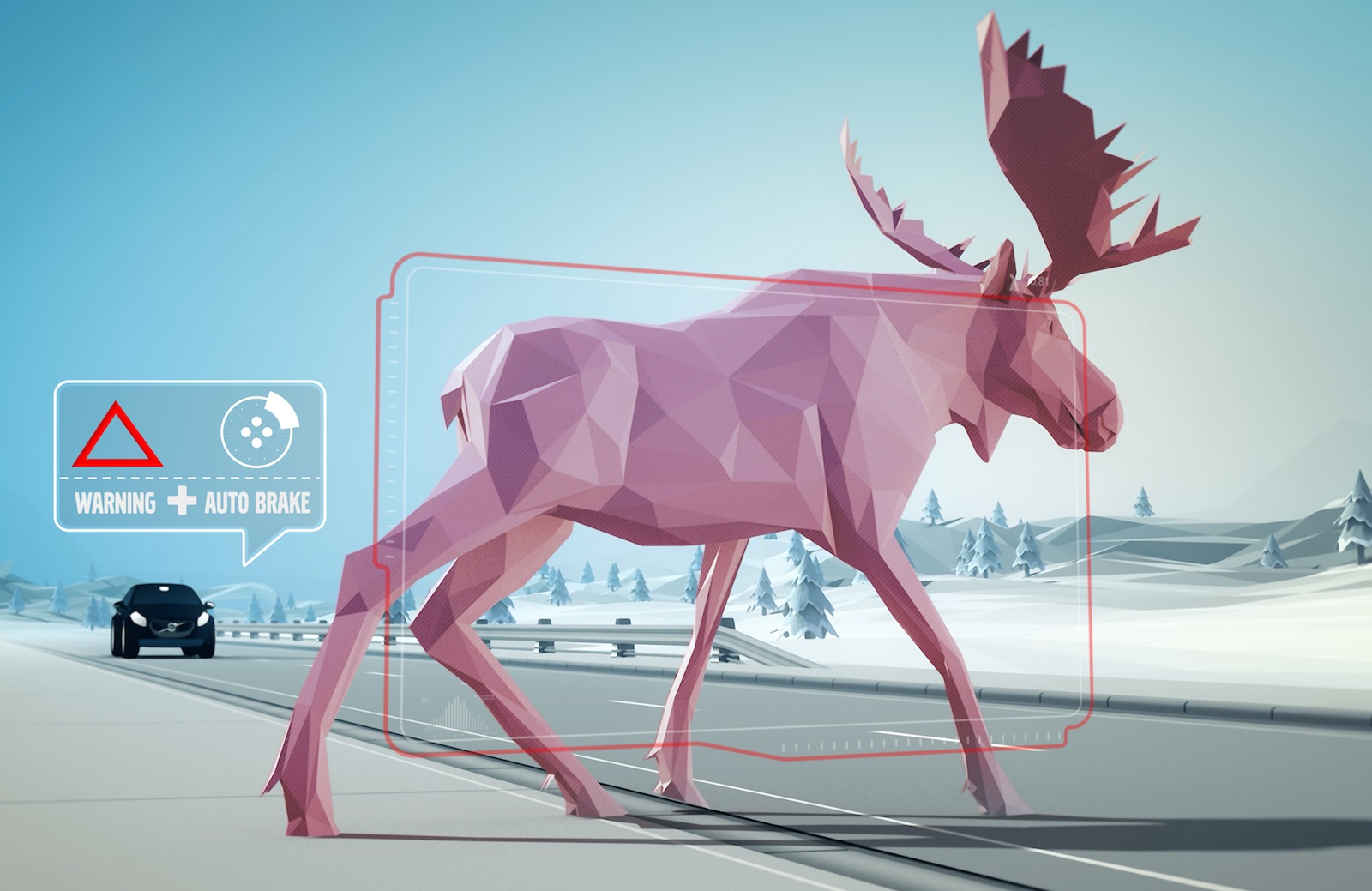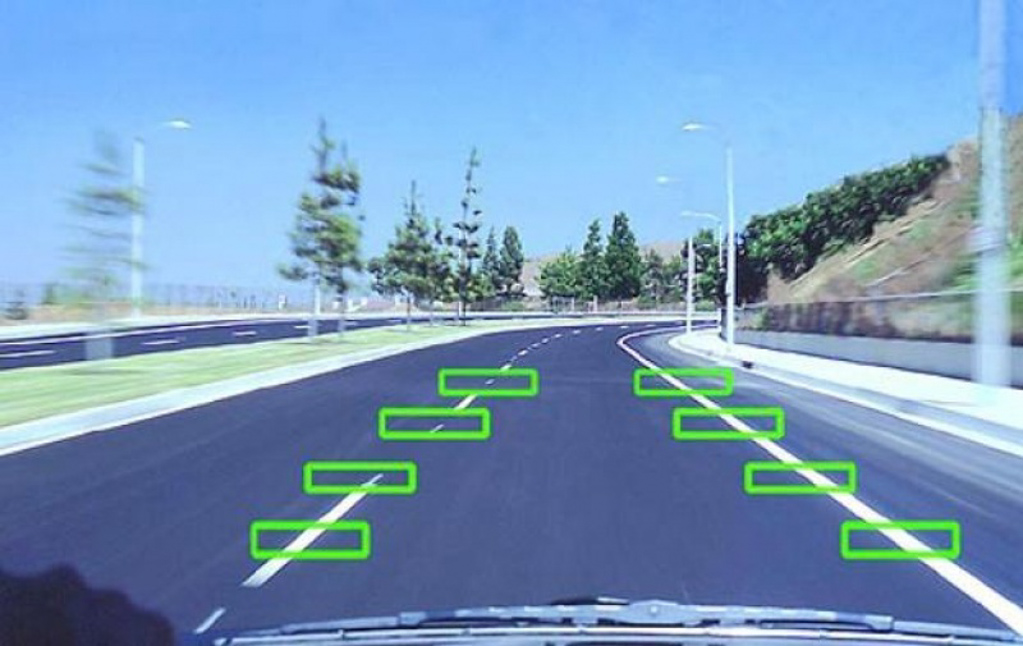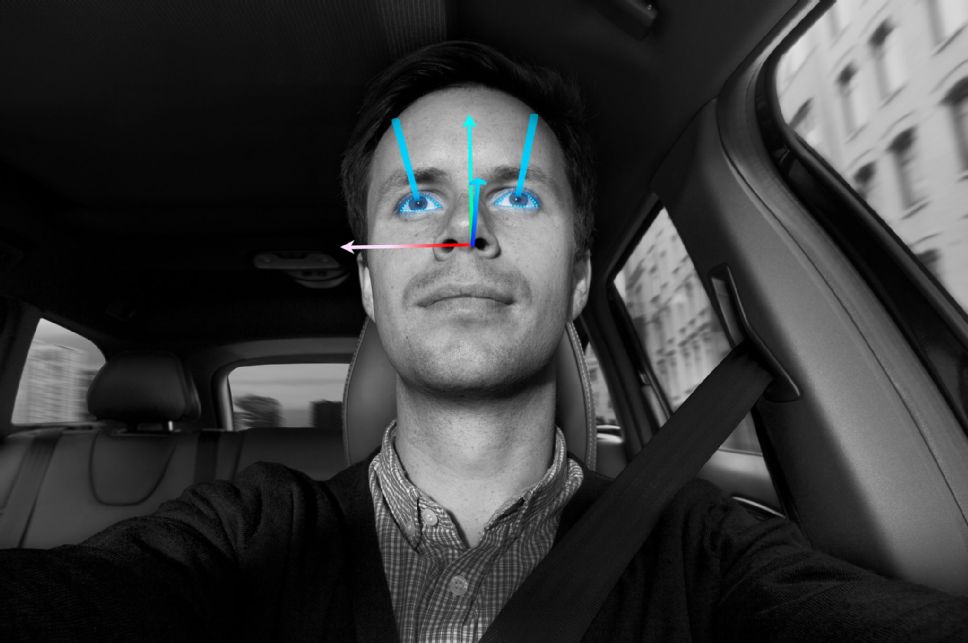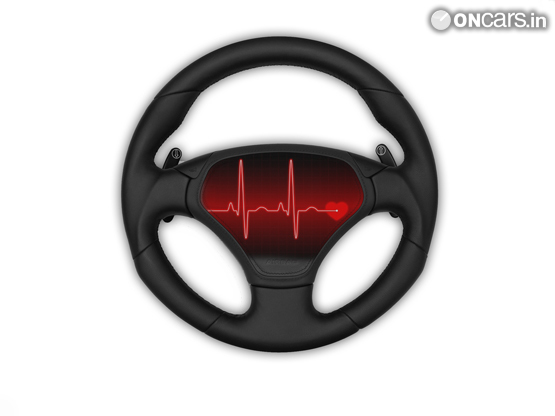Supervised: modern car security systems

While we are reading news about self-driving cars, few people think about how quietly the security systems of modern cars are developing. Every year safety requirements increase: when testing according to Euro NCAP standards, lateral impacts on the pole were introduced, the presence of ESP is required, more attention is paid to the safety of children. This changes not only the appearance of the car (minimization of sharp corners and edges in the front of the car, the appearance of gentle and rounded hoods), but also the development of “active safety” systems designed to prevent accidents at all. Let's find out how much the modern car "sees and knows" about the world around it.
Regardless of how each manufacturer calls these systems, their essence lies in tracking or surrounding space (detecting possible obstacles in front of the car) or the driver (systems controlling driver fatigue, the presence of seat-belts) or the condition of the road surface layout, weather conditions).
An example of such a security system is Volvo City Safety, the development of which began back in 2007. This automaker has a very ambitious goal - by 2020, people in Volvo cars should not die in an accident. Surely the reality will correct these plans, however, the existing developments are already able to please both beginners and experienced drivers.
')

To monitor the situation on the road in the car uses the sensor LIDAR (Light Detection And Ranging), installed in the upper part of the windshield at the rear-view mirror. Lidar emits electromagnetic waves to an object and receives a reverse signal - an echo. The speed of the vehicle ahead is estimated by the change in the frequency of the reflected wave, and the distance to the car by the time the signal returns. Lidar uses an infrared laser beam. The principle of lidar operation is similar to radar. Laser sensors are cheaper than radar, but they are subject to weather conditions, therefore, radar vehicles are mainly used on premium cars. The distance sensor is mounted on the front bumper or grille of the vehicle's radar. The range of the sensor is about 150 meters. In modern cars, distance sensors of the short and long ranges are used.
The system analyzes the possibility of a collision and, in danger, gives the command to apply the brakes and stop the car. At speeds up to 50 km / h, the system is able to work at a distance of 50 meters, and at slow motion (up to 15 km / h) it can completely stop the car. If the speed of the car is higher, then it will be reduced as much as possible, in order to reduce possible damage during an accident. It is curious that the sensor itself has as many as three “lenses”; one is not enough to work and correctly determine the distance. There are many variants of pedestrian detection systems - these are the Advanced Pedestrian Detection System from TRW and EyeSight from Subaru, BMW Night Vision, Honda Sensing, Ford Pre-Collision Assist, Toyota Night View, PRE-SAFE from Mercedes and many others.

In addition to the automatic braking system itself, such a security system also includes a camera with the ability to recognize road signs, cyclists and pedestrians, a system for monitoring the situation behind the car and assistance when reversing with poor visibility. BMW went further in this direction, presenting an intelligent night vision system for detecting pedestrians in dangerous proximity to the roadway. The Dynamic Light Spot system with the help of heartbeat sensors determines the presence of living creatures at a distance of up to 100 m from the car. The methods of operation can also be different - in addition to the warning or automatic braking, the brake boosting system can also be used. If the obstacle turned out to be real and the driver depresses the brake, the car will be ready to brake more.
The recognition of road signs usually occurs according to the following algorithm:
- recognition of the shape of the road sign (round shape);
- recognition of the color of the mark (red on white);
- label recognition (speed value);
- recognition of the information plate (mode of transport, time of action, area of coverage);
- analysis of the actual speed of the car;
- comparing the speed of the car with the maximum speed;
- visual and audible warning of the driver when rejected.
The image in the form of a speed limit mark is displayed on the instrument panel screen and remains visible until the limit ends or is changed. In a number of road sign recognition system designs, the electronic unit interacts with the navigation system, namely, it uses data on speed limit signs from navigation maps in its work. Even if the sign is not determined by the video camera, information about it will be displayed on the instrument panel. The system is able to recognize speed limits applicable to a particular type of transport, as well as signs of speed limit cancellation.

A separate interesting feature in cars of various manufacturers is the LDW (Lane Departure Warning) road marking system. This system monitors the markings on the road and signals the driver if the car drives out of its lane without turning signals on. The classic response of the LDW system to the intersection of the marking line is a beep and a blinking indicator to alert the driver. The system recognizes intermittent and continuous markup, working day and night. Of course, when the road is covered with snow, the camera will not be able to see the markings, and with completely erased markings, the system is expectedly not working: it is quite logical that the camera simply has nothing to catch on. Cameras for such a system are located in the “classic” place for DVRs - near the rear-view mirror, just below the “janitors” work area. Perhaps similar functions will soon be mastered by rapidly developing DVRs, which have already mastered the functions of motion detection, navigator and audio headset . More complex systems use the ESP (Electronic Stability Program) braking system, which can brake each wheel individually. In this case, if the car crosses the markings on the right side, the wheels on the left brake, which shifts the vehicle's trajectory to the center of the lane.

With the help of external sensors, the automatic switching systems for low and high beam headlights HBA (High Beam Assist) work. In addition to the actual switching of the light mode, using the data from the LIDAR sensor, the system can adjust the lighting parameters depending on road conditions (change the light spot). Many cars are equipped with cameras around the perimeter, providing the functions of a circular view, when the car can be seen from the top and around it the image from all cameras is drawn at once. To enhance security, the MOD (Moving Object Detection) system is used, which is designed to control the presence of moving objects in the camera's field of view. When the system is activated and someone passes near the car, a beep sounds and the image from the camera lights up with a frame, which captures the movement.

I learned to follow the car and the driver fatigue. Monitoring driver fatigue DAS (Driver Attention Support) involves collecting a number of parameters, based on which a conclusion is drawn about the level of driver fatigue. If the system considers the driver tired, it will give a signal and advise you to drink a cup of coffee (some systems use the icon of a cup of coffee to display the driver’s fatigue band). Such systems process several sources of information, on the basis of which they make their conclusion. There are solutions that monitor the face and facial expressions of the driver with the help of the salon camera. They are able to track the direction of the driver’s gaze, how long he closes his eyes, the position of his head. The closest solution to the problem is Ford, which offers a driver load assessment system designed to reduce distraction and excessive stress.

Driver fatigue is assessed by processing a variety of parameters:
- vehicle movement (speed, longitudinal and transverse acceleration, yaw rate);
- biometrics (heart rate, respiratory rate, skin temperature).
- driver actions (steering angle, accelerator and brake pedal position);
- road conditions (traffic density, the nature of the road surface);

The following biometric sensors are used in the work of the driver load assessment system:
- infrared sensor behind the steering wheel that monitors the temperature of the face.
- piezoelectric sensor in the seat belt to monitor respiratory rate;
- conductive pads on the rim of the steering wheel to measure the pulse;
- infrared sensors on the rim of the steering wheel to measure the temperature of the palms;
Another area of use of biometric sensors is related to the control of the physical condition of drivers. Ford is offering to monitor the condition of age drivers using heart rate sensors built into the seat. It is based on the electrocardiogram technology, which monitors cardiac electrical impulses and promptly identifies disorders as well as symptoms of other diseases.

Toyota uses vital sensors on the rim of the steering wheel to monitor vital signs: electrodes for monitoring heart rate and optical sensors to assess palm conductivity. The driver’s condition monitoring system is linked to the emergency braking system, which allows the vehicle to be stopped in the event of a heart attack, as well as the navigation system, which automatically paves the way to the nearest medical institution. The system allows you to determine the onset of a heart attack in its early stages.

BMW is working on a technology to alert drivers of diabetes to increase blood sugar levels. A device for measuring blood sugar is connected to a smartphone, which in turn is connected via Bluetooth to the car’s multimedia system. On the screen of the system displays information warning the driver about the danger of loss of consciousness due to high blood sugar levels.
Already in 2016, Volvo promises to commission a communication system between the security systems of cars on the road. It is a system of "cloud" storage of data collected by cars, from where it is taken by other cars and utilities. How much such information can be useful is easy to evaluate using the example of the Yandex.Traffic application. By pre-installing such a system on all cars and collecting much more data, except for location and speed, you can prevent accidents, notify utilities of difficult (icy) stretches of road.
Today, these systems have become available in popular and relatively affordable cars: usually these technologies are found alone and in much more expensive cars. Almost imperceptibly cars learned to follow both the external environment and their own passengers. In emergency situations, they have already learned to take control, to control the driver - the future is closer than it seems at first glance. However, it is still too early for car drivers without these functions to worry if they need to install some of these systems by themselves: for example, instead of a camera system around the perimeter, you can install parking sensors, for video recording of the situation in front of the car and in the cabin - a video recorder with two cameras For biometric indicators - smart watch with heart rate monitor.
Subscribe to our blog on Geektimes not to miss our new publications!
Source: https://habr.com/ru/post/376995/
All Articles